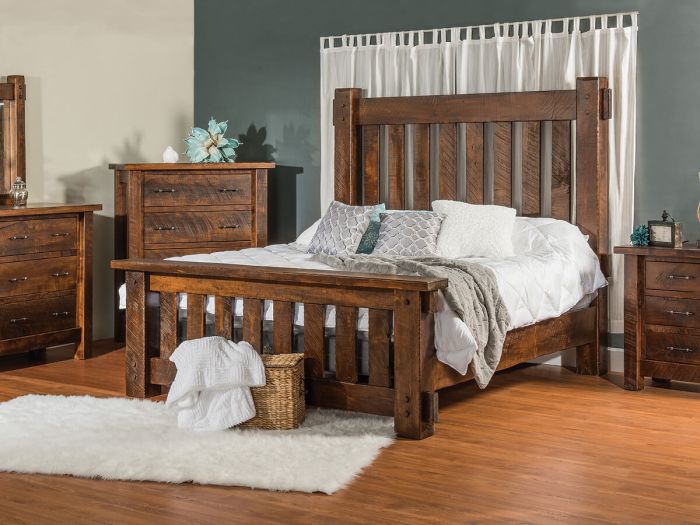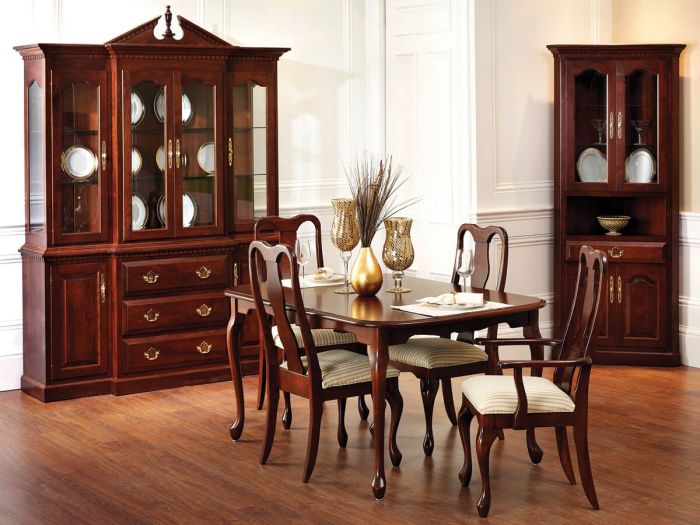To Mix or Match? A Guide to Choosing Wood Stains That Go Together
By Bailiegh Basham · February 8, 2022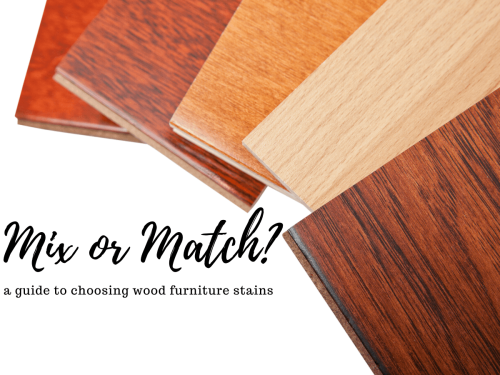
Mix & Match Wood Stains In Your Furniture and Home
Should you spend the time and money to match an existing wood stain to a new piece of furniture? Or should you simply find a different stain that complements your existing furniture or wood floor? And, what is a complementary wood stain, actually?
All that and more will be answered here. We have decades of experience helping customers mix and match wood stains. Find the solution that works best with your personal style and the needs of every room in your home.
But first thing’s first. Mixing and matching wood stains can get complicated, so we want to make things as simple as possible. Here’s a little glossary to keep the commonly misunderstood terms in order.
- Wood Stain - Rubbed into the wood in order to alter its color, tone, or shade. Typically oil, water, or alcohol-based.
- Wood Undertone - The subtle coloring of the wood due to the particular stain that was added. More on this below.
- Wood Finish - Added as a final touch to seal and protect the wood from discoloration, water, and scratches.
How to Mix Wood Types
Mixing wood is for you if…
- You have a wood floor, and don’t want new wood furniture to clash (or to mix too closely).
- You want to introduce a second or third wood stain color into your room but want an intentional look.
- You anticipate buying pieces of wood furniture over time, rather than purchasing a bedroom or dining set now, but still want a cohesive look in the end.
- Your color scheme is understated and you want to use differing wood stains to add visual dimension.
We recommend two wood stains per room, with a maximum of three. This helps make the wood mixing seem intentional and not too busy. When it comes to choosing wood stains that go together well in your home, it comes down to undertones and grains.
1. Understand Your Wood’s Undertones
The two types of undertones are warm (red, pink, yellow, orange) and cool (blue, purple, green). If you introduce a second or third wood stain into a room, it should match the existing wood’s undertones. The wood types and finishes may be different, but the undertones should be in the same family.
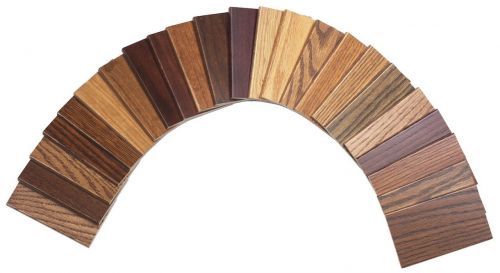
For example, here’s a great mix of two woods with pink undertones:

Here’s another great mix of woods with pink and red undertones, both in the warm family:

And now here are green undertones:

See the difference? It’s possible for two wildly different woods and stains to look nice together as long as their undertones are in the same color family. If we tried pairing Quartersawn White Oak in Country Road it would clash with Brown Maple in Cinnamon Stick, simply because of the undertone differences.
2. Request Samples of Wood Stains Before Ordering Furniture
We always recommend requesting samples, even if two pieces of furniture are listed as similar stains. This is because the same stain on two different woods may finish in different undertones. It’s always best to view stains in person, in your home’s lighting. Because, yes, lighting may bring out new undertones as well.
Another way to think of it is like choosing white paint for your walls. One sample may look plain white in-store, but in your home’s lighting, or next to your white couch, it may appear to have unexpected yellow, green or gray undertones.
Browse our dozens of stain options to request samples: Countryside Amish Furniture Stains.
3. Consider the Grain
In addition to color matching, it’s important to match fine grains with fine grains and large grains with large grains.
For example, if you have a large, prominent wood grain pattern, the furniture, and therefore the vibe of your room, will appear more casual and rustic.
Conversely, wood furniture with a finer, more understated grain, exudes a more elegant look.
To make a room feel cohesive in its rusticness or elegance, make sure the wood grains aren’t fighting each other's vibe.
And there you have it. These tips should help you mix wood furniture in your home like an interior design pro! Remember:
- Select 2-3 wood stains, maximum.
- Your stains should all share the same undertones.
- Request samples to view the wood stains in your home and see firsthand what goes well together.
- Choose large grains or fine grains, depending on your design style.
Bonus Tips for Mixing Wood Stain Colors Within Your Home Decor
- Make a clear distinction between what is the primary wood stain and what acts as accents
- Contrast light and dark woods, though both should have the same undertone
- Balance the different woods throughout the space for a cohesive flow
- Don’t mix differing woods in addition to bold mixes of colors. Contrasting textures and tones create visual intrigue, but too much can feel chaotic. If you want to play around with multiple furniture wood stains, anchor the space with a simple color palette. Similarly, avoid mixing both woods and vibrant patterns.
- Don’t focus solely on your furniture; factor in your floor’s wood stain when mixing different combinations.
How to Match New Furniture to Existing Wood Stains
Matching wood is for you if…
- You have a dining table, and want a set of chairs to match.
- You have a set of chairs and want a bench or more chairs to match your set.
- If you want the furniture in your room to appear as a high-end cohesive “set”.
- You want a piece of furniture to match your specifications—and get it exactly as you want it.
As a first step, you can browse our extensive stain options and request samples that seem like a close match. These samples typically arrive within 3-5 business days, and you can view them in your home’s lighting with your existing furniture.
However, if it’s not quite right, an exact match is best done through a process called “stain matching”. This is where we can take an existing piece of furniture you like, and custom stain a new piece of our furniture to match it.
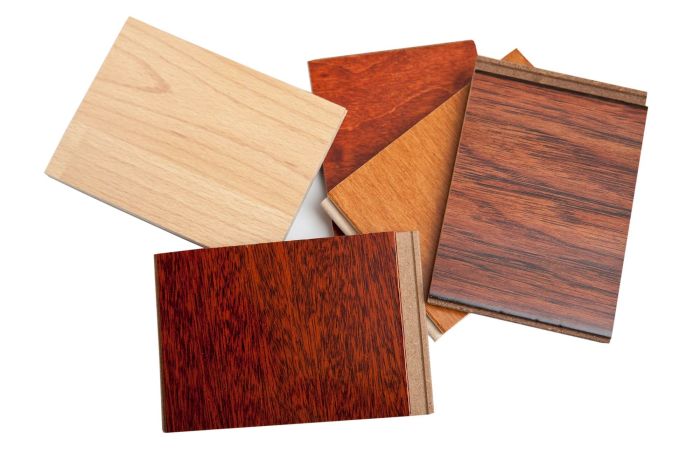
Stain Matching Process
Our typical turnaround time for custom furniture is 12 weeks. Stain matching may require an additional 2-4 weeks and an additional cost.
Send us a sample of your wood.
Some common ways to send us samples: a drawer box, removable leg, piece of trim, sample swatch, or piece that’s already been chipped off.
We, unfortunately, can’t accept photos of your furniture or the name of the stain, even if you know it. We’ll need to examine the piece itself in person in order to match it perfectly. The age of the wood, the thickness of the stain, and the time it was left on before drying is all minor factors that can change the coloring in a major way.
We will replicate the stain.
Much like the color matching provided for paints by hardware stores, we have the expertise to match stains. We will work to ensure the stain matches as closely as possible. However, if we deem the stain too difficult to match, we will work with you to find a complementary color that will look beautiful in your room.
We want your handmade Amish furniture to be in your family for generations, so we encourage you to have it exactly as you like it. However, the appearance of some natural woods can change over time. For example, oaks tend to be yellow and cherry gets redder throughout its first year (part of its charm!) So any newly stained furniture isn’t guaranteed to perfectly match your existing furniture over the years as they continue to age at different rates.
But part of the excitement of investing in authentic, handmade wood furniture is watching the subtle changes over time, especially as different members of your family may inherit and incorporate it into their interior decor.

